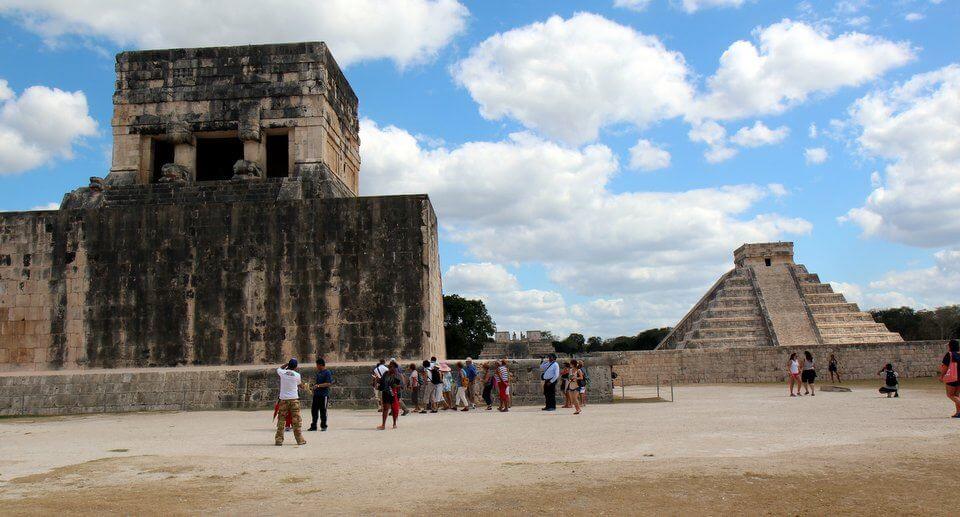
Looking back towards El Castillo, from the entrance to the Ball Court
The Ball Court
Like many other Mayan sites, Chichen Itza has a juego de pelota, or ball court, but the one here is by far the largest in Mesoamerica. The base of the side walls are carved with fine detail, depicting players in the midst of the action. The violent images include a graphic decapitation with snakes pouring out of a man’s head instead of blood.
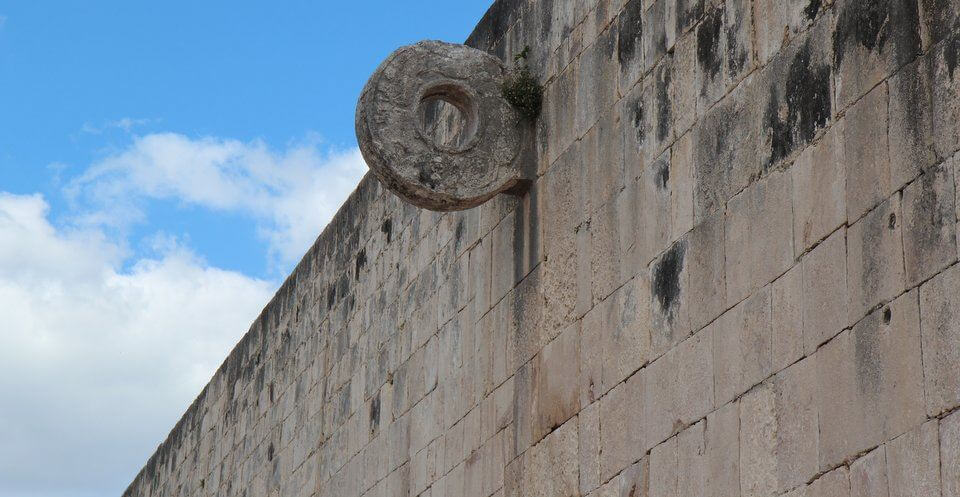
The scoring hoop on the wall of the ball court
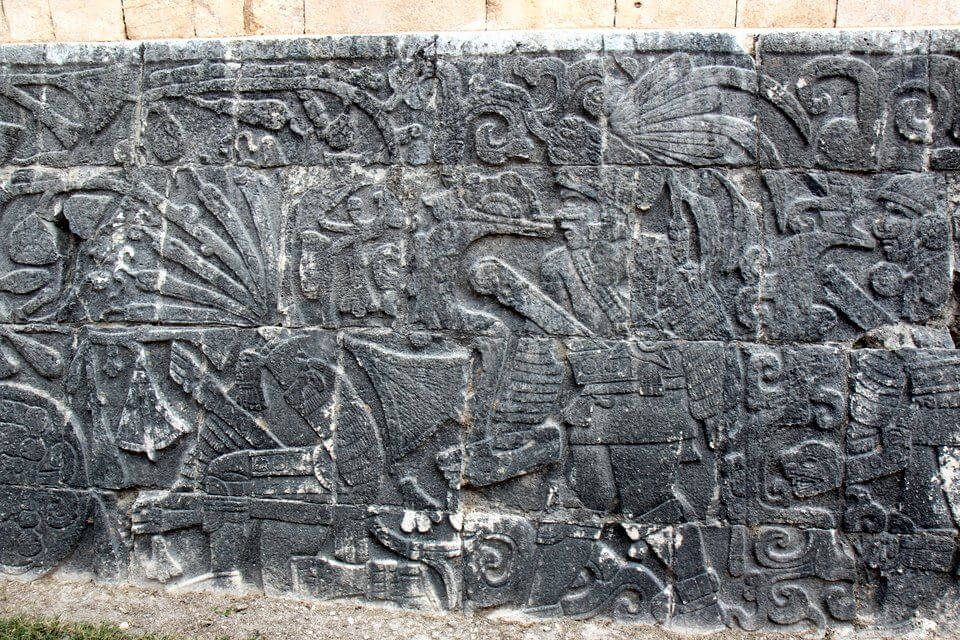
One of the many carvings that line the Ball Court at Chichen Itza
There’s some debate over what happened to the winners and the losers. Some say the losers were sacrificed for their defeat. Others suggest the victors were better offerings to appease the gods.
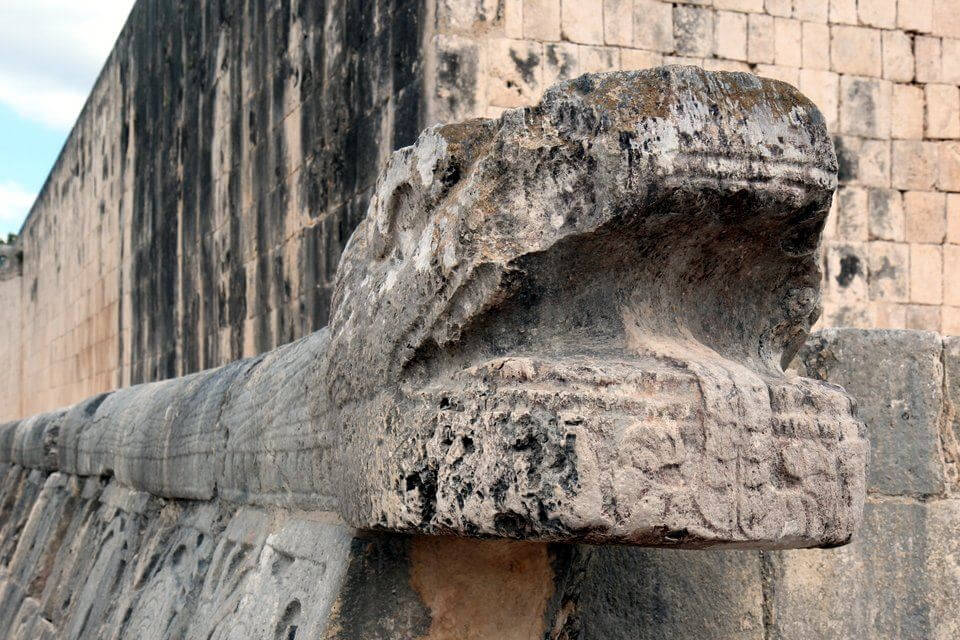
The serpent carving that runs the length of the ball court
Lining the friezes at the base of the side walls are serpents that run the entire 168m length of the court. At the far end of the ball court is the North Temple, also known as Templo del Hombre Barbado, or the Temple of the Bearded Man. There’s nothing more to the name than the main carving is of a man with a prodigious amount of facial hair.
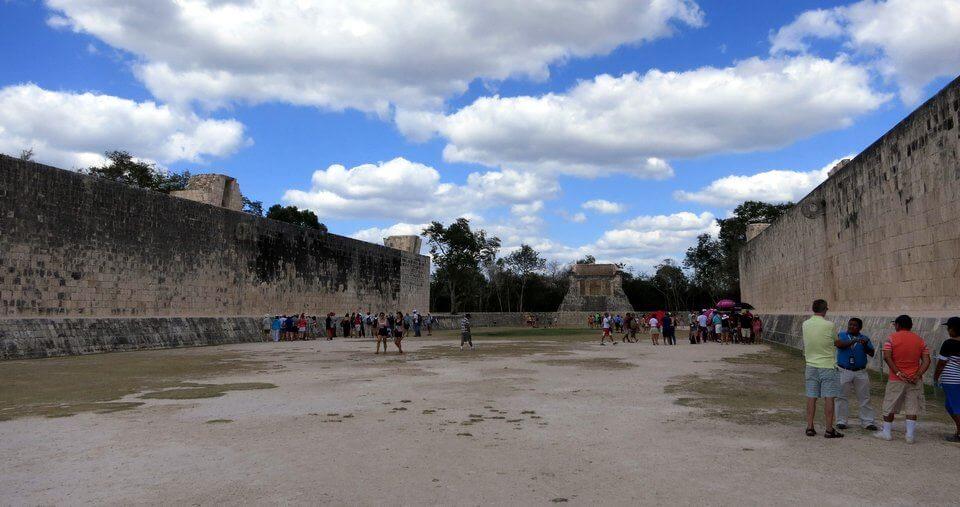
Looking down the length of the Chichen Itza Ball Court – note the height of the scoring rings!
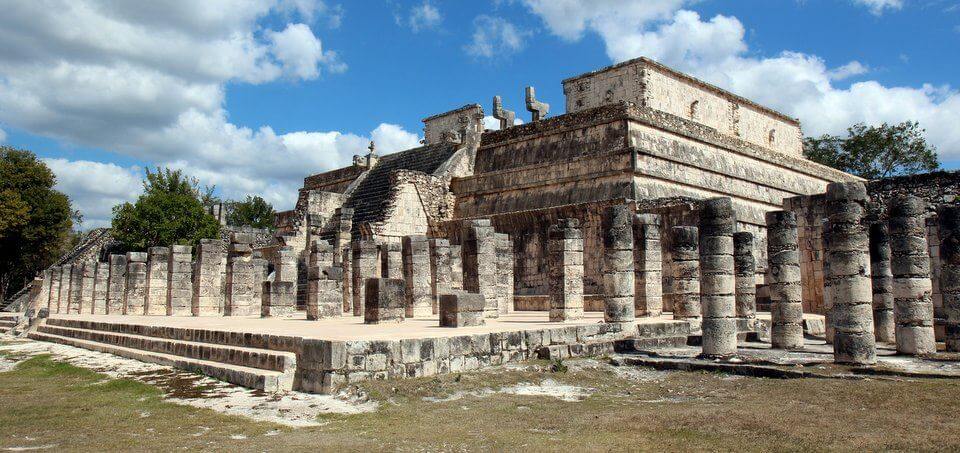
Temple of the Warriors at Chichen Itza
Group of a Thousand Columns
Set away from the ball court and the centrepiece pyramid of El Castillo is the Group of a Thousand Columns. The Temple of Warriors was originally attached to a large hall. The roof of that hall has now gone, leaving row upon row of plain stone column.
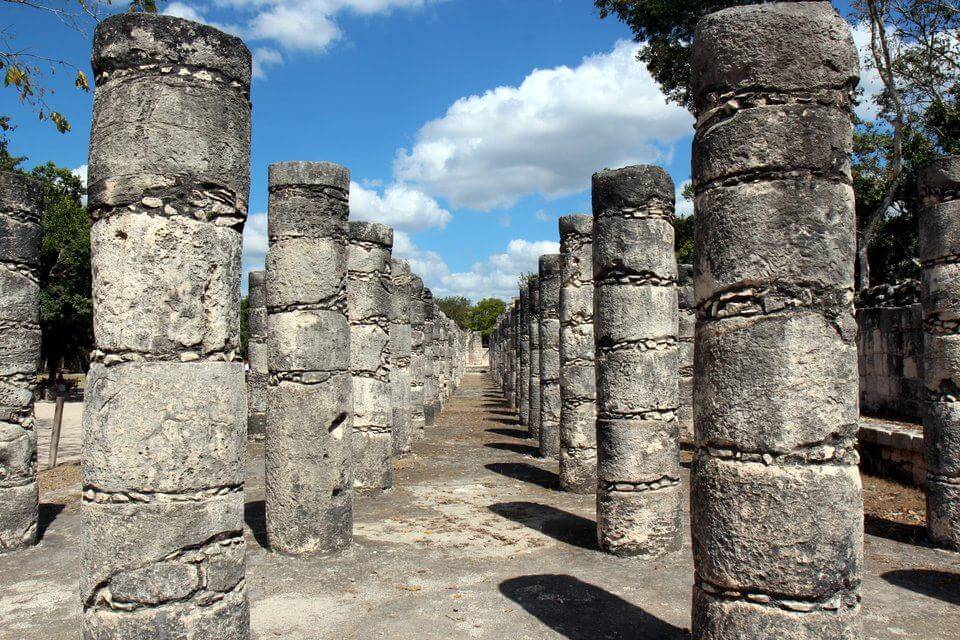
Looking down the Group of the One Thousand Columns
Chichen Itza Visitor Tips
Getting into Chichen Itza is a bit of a hassle. There are two ticket offices – one for a permit and one for an entrance ticket. The queues for both are long and unruly and tour group guides seem to be allowed to jump to the front.
Inside the main entrance are the usual toilets and gift shops, along with a free luggage office used to handling the large bags of passing backpackers.
Outside the main entrance is a sprawling market with moderately persistent sellers. The other side of the market is the ADO bus terminal. The ADO ticket office is back in the main entrance, next to the office that sells the permits.
One surprise at the entrance was a very tourist-trap looking restaurant that had really excellent food. The prices are a bit higher, as you’d expect, but the dishes we tried were perfectly prepared – nothing like the Tex-Mex food of Cancun and Playa del Carmen.
Visitors arrive in waves, presumably from cruise ships, so there’s no ideal time of day to visit. Coming earlier would save walking round in the heat as there’s little shade, even in the jungle covered temples.
Coming for the equinox is a different experience altogether – there are so many people that it’s difficult to sightsee. Just find a good spot and take your seat early to get a good view during the sunset.
More about Chichen Itza can be found at their official website.
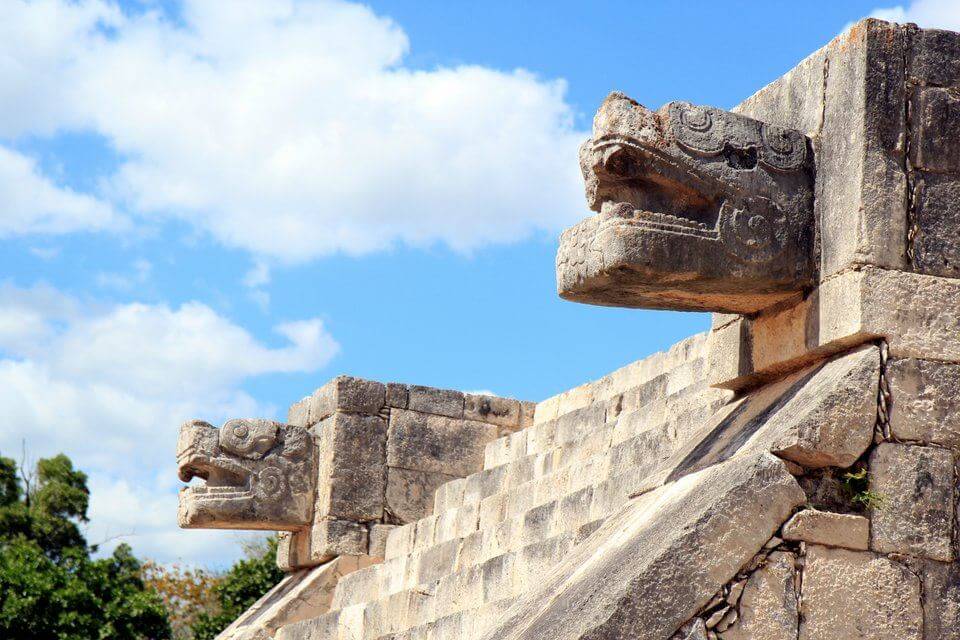
Carvings at the Platform of Venus

Fantastic shots of the carvings… I can’t decide on a favorite.
Pingback: @ArchTrav
Pingback: @TravelCultural
Pingback: @SecretsMaroma
Such an interesting post. As an avid traveler, I have always wanted to visit the Chichen Itza. It has always been on my bucket list and I hope to have the chance to see the beautiful landmarks of Central America. The pictures are truly magnificent. Great post, thank you for sharing!
-Sara